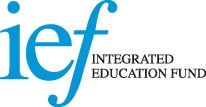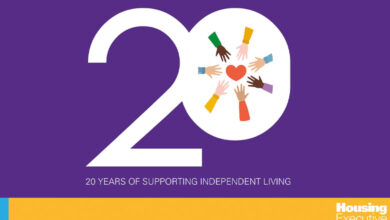Where is integration in the education reform plans?
 The Integrated Education Fund calls for the sector to be represented fairly in the reshaping of education.
The Integrated Education Fund calls for the sector to be represented fairly in the reshaping of education.
The Education Minister can surely no longer hold back on advancing integrated education. To do so would be to reject common sense, avoid his statutory duty and ignore the desire of the electorate for further integration in our schools.
Economically, the case for integration has been made many times in recent years. In the face of more than 80,000 empty desks in schools across Northern Ireland, the merging of schools, including mergers across the traditional sectors, would be a rational and efficient response to the current financial pressures on education. That is before we even consider the social benefits of integration.
The Good Friday Agreement stated that an essential aspect of the reconciliation process is the promotion of a culture of tolerance at every level of society, including initiatives to facilitate and encourage integrated education. There is a statutory duty on the Department of Education to enable the growth of integrated education.
Yet as policy-makers continue the process of planning the future of our education system, it seems that integrated education is being airbrushed out of the picture.
The terms of reference for this area-based planning process include requirements to “reduce duplication of provision (and) identify realistic, innovative and creative solutions to address need, including opportunities for shared schooling on a cross-sectoral basis”.
However, most of the initial round of proposals which emerged would have reinforced segregation. For example, projections of future patterns have been based on current provision; in areas where there is no existing integrated school, it has been assumed that none will be opened in the future.
Given the timid approach taken so far, there is a real concern that we will be left with segregation embedded in the structure of our education system.
And yet, more radical proposals for reform would garner public approval.
Recent opinion polls show widespread support for mergers across traditional divisions, reinforcing the results from successive surveys over the years showing that parents like the idea of integrated schools. Similarly, the enrolment figures for the integrated sector show its popularity. All types of school are experiencing falling rolls, but a recent report from the Assembly’s Research and Information Service shows that the integrated sector overall is faring better than others.
The area-based planning process for education does not embrace or even reflect this.
We have also been watching the slow progress of the establishment of the single Education and Skills Authority (ESA) and find again that integrated education has been given little consideration.
The new Education Bill specifies that ESA will have a role in “encouraging and facilitating the development of education provided in an Irish speaking school” but studying the Bill we find that there seems to be a legal and policy disconnect with regards to any similar encouragement for the growth of integrated education. And in November, we saw adverts inviting applications to be board members of ESA. That is, applications to be in a minority of “community representatives” sitting with four representatives of the Catholic Church and four of the Protestant churches. Even before the Bill finished the committee stage at Stormont, it seemed the board was already being constituted and very much along the lines of our existing sectoral and separate education system; there is not a single place reserved at the table for representatives of integrated education.
The Programme for Government last year included a pledge to establish a ministerial advisory group on the advancement of shared education. Yet this group does not have to report to the Minister until after the boards have consulted the public and reported on their area-based plans. How can the public have faith that their wish for greater integration will be included in the department’s vision for the future of education, when the messages emerging are contradictory and the timetable for education reform seems haphazard?
Statistics published in November 2012 showed that the majority of our schools educate children overwhelmingly with others of the same tradition and background. Basing a future model on the present reality represents a missed opportunity to address division; to re-imagine our education structure in such a way as to meet the requirements of so many parents and families. Children are being denied a chance to learn, play and grow together and Northern Ireland as a whole is being denied a new, sound foundation for a future shared society.
 Integrated Education Fund
Integrated Education Fund
41-43 University Street
Belfast, BT7 1FY
T: 028 9033 0031 / F: 028 9066 0061
W: www.ief.org.uk





